Abstract
Pigeons were presented a series of keylight time periods (separated by blackouts) during which two response keys were lit, one by blue light and the other either by orange or green. Blue-key responses changed the color on the other key. Orange-key responses sometimes produced food during the first half of a time period; green-key responses sometimes produced food during the second half. In three experiments, the probability of a green-key response increased as a function of elapsed time. Experiment 1 compared performance when the duration of the keylight periods was varied across a wide range. Discrimination of performance was similar across the range of durations. Experiment 2 varied both relative reinforcement rate and the local reinforcement rate for orange-key and green-key responses. These manipulations produced changes in response bias but not discrimination sensitivity. Experiment 3 varied the local temporal placement of reinforcers within time periods and demonstrated that choice behavior was affected by differential reinforcement at different points during the time periods. The results were consistent with previous research on duration discrimination that used psychophysical trials procedures.
Full text
PDF
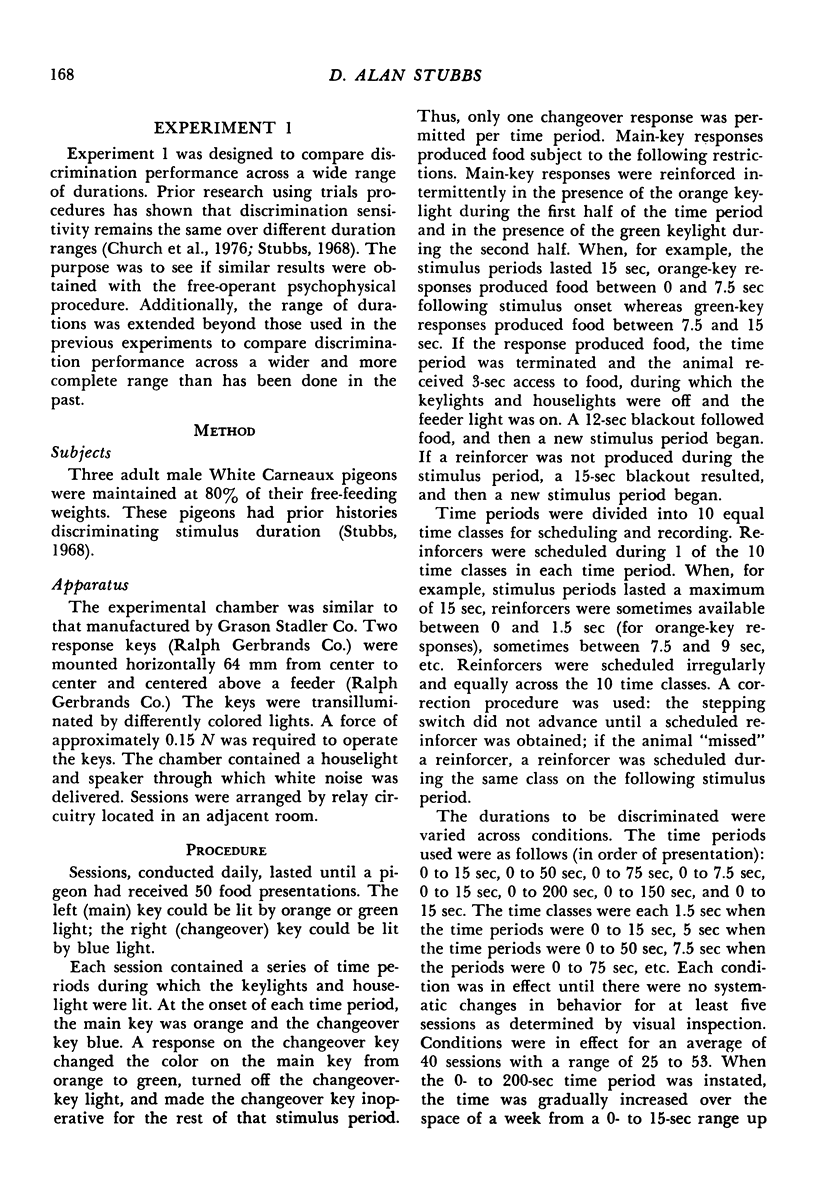
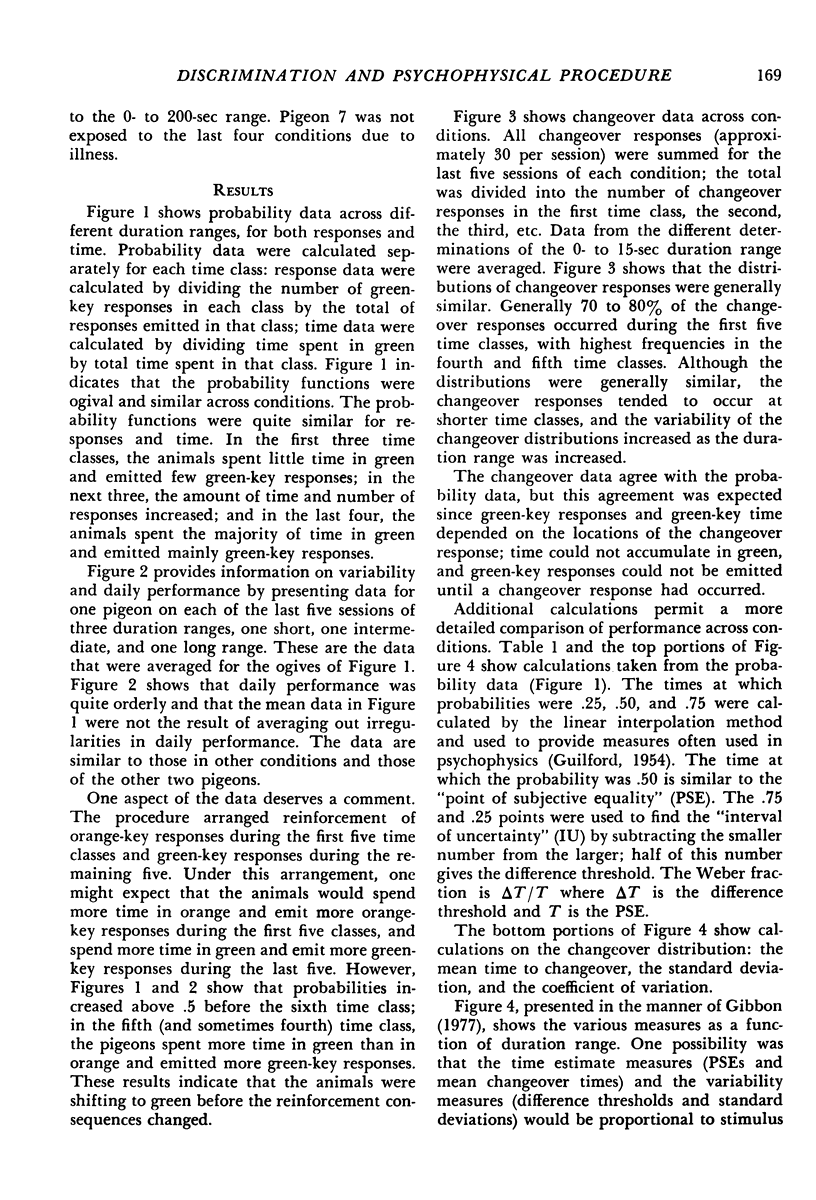
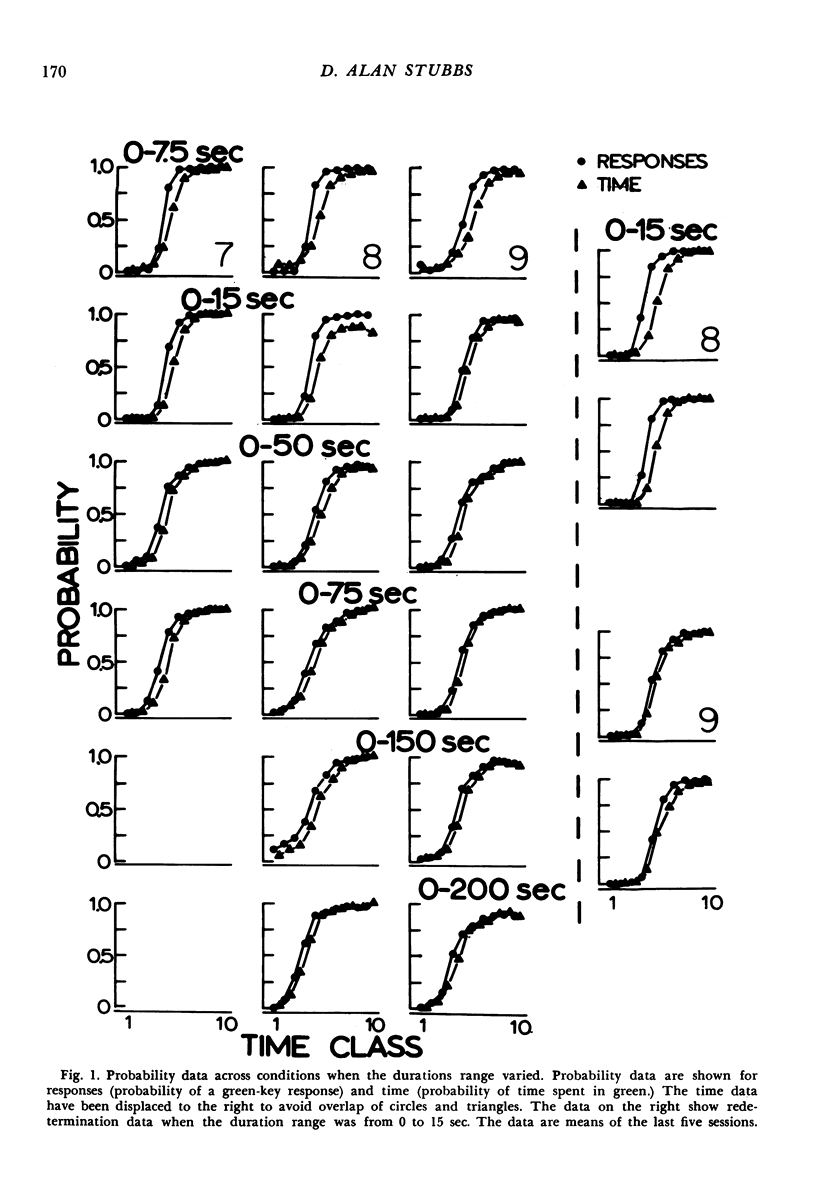



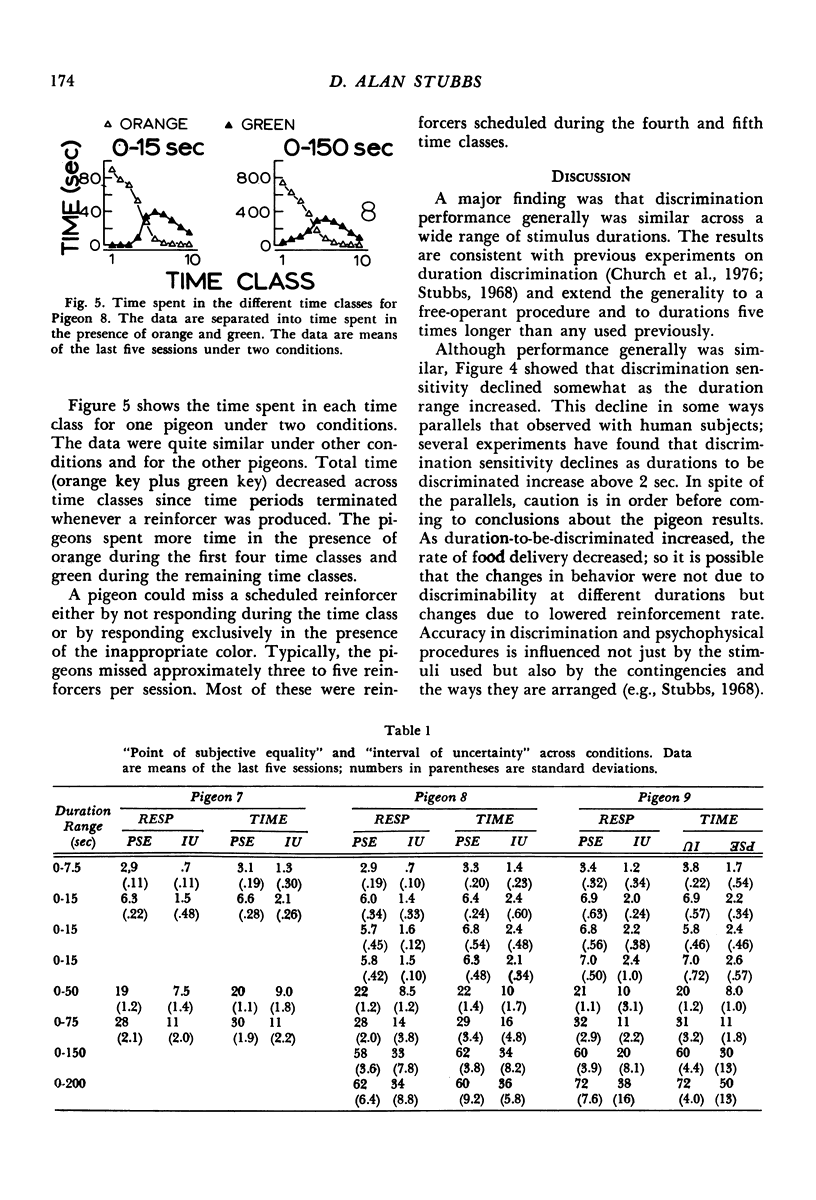

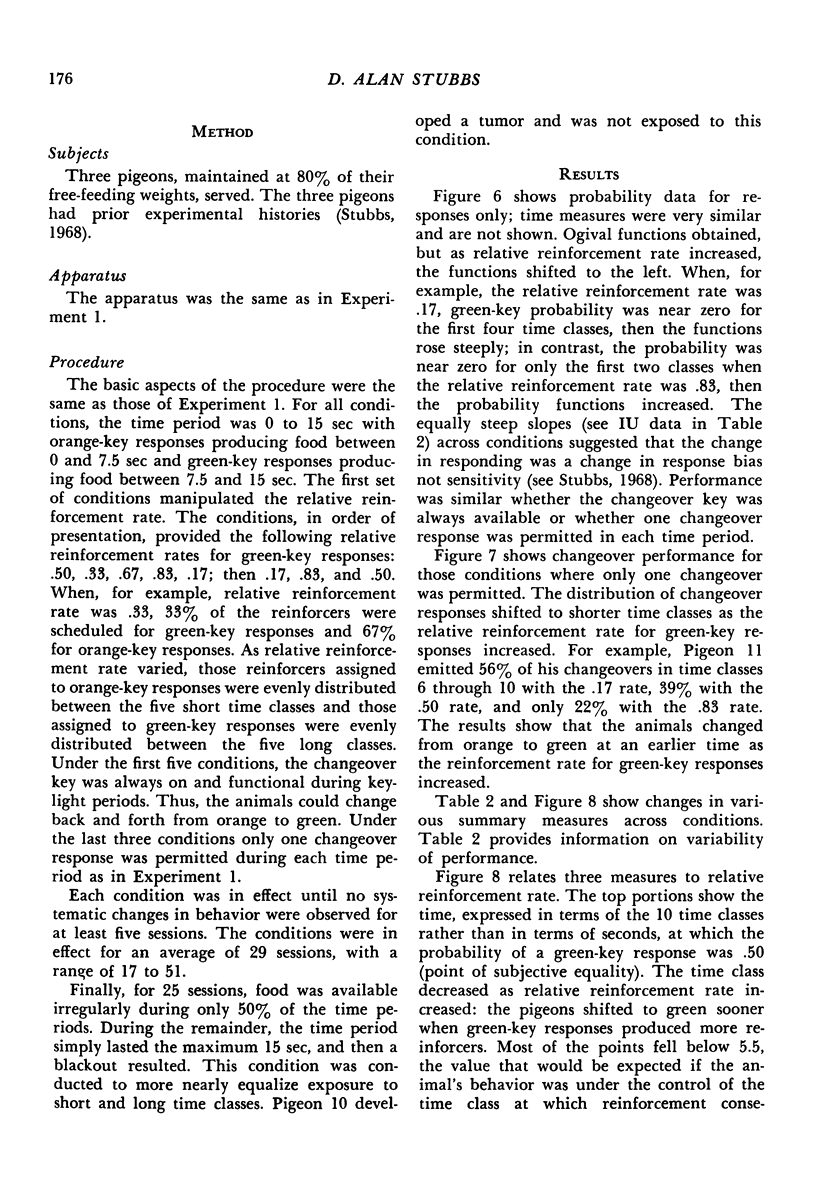
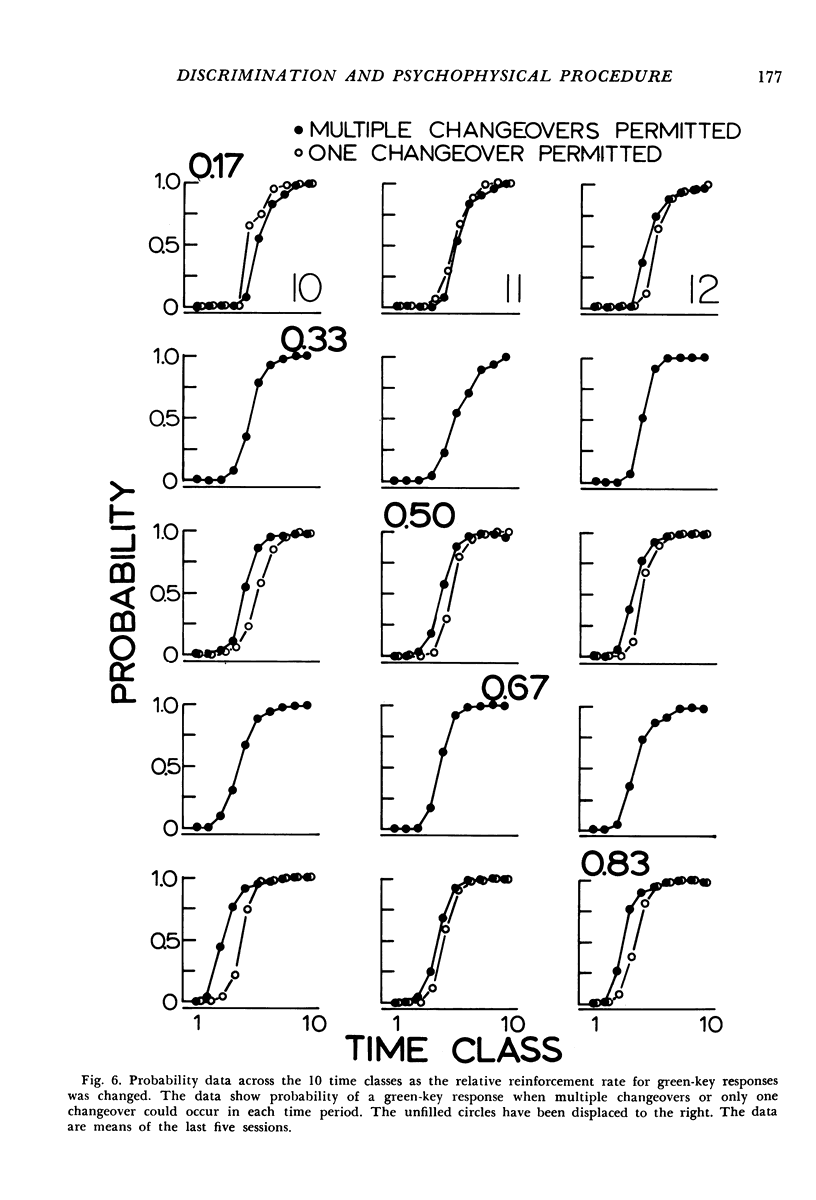

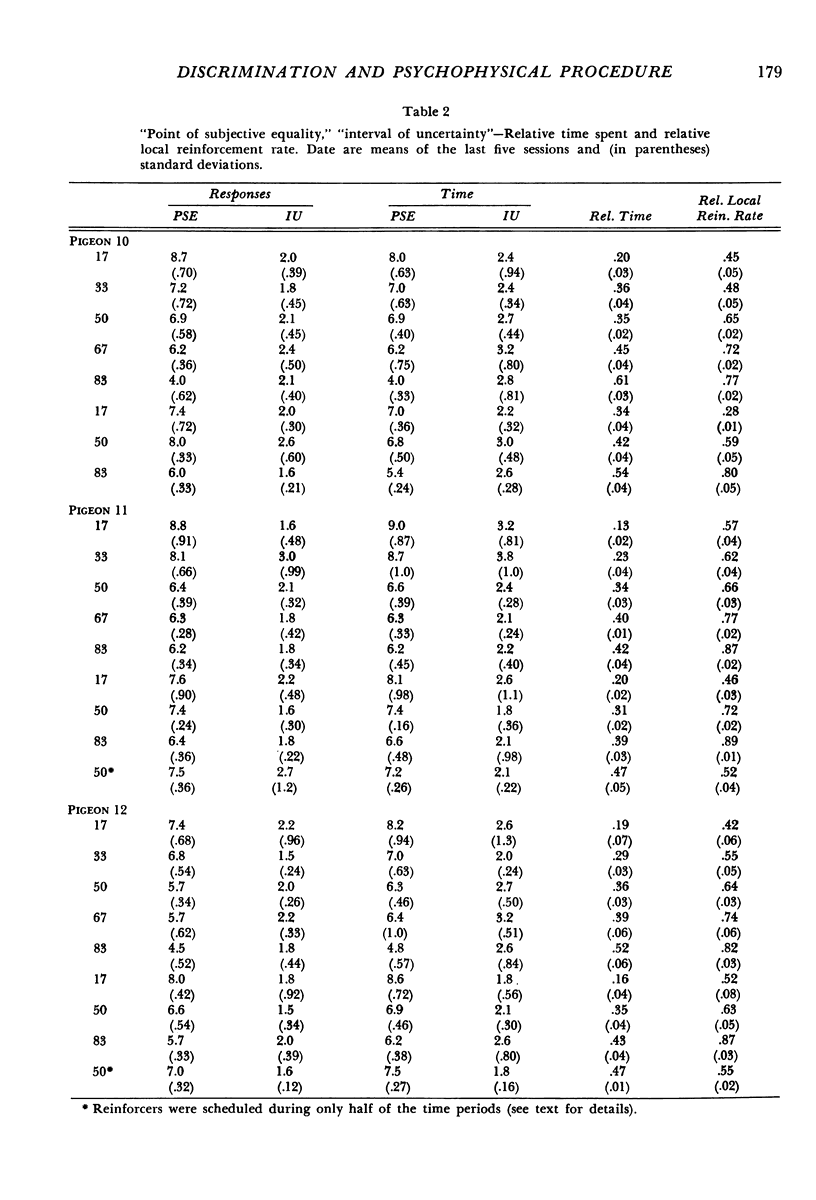

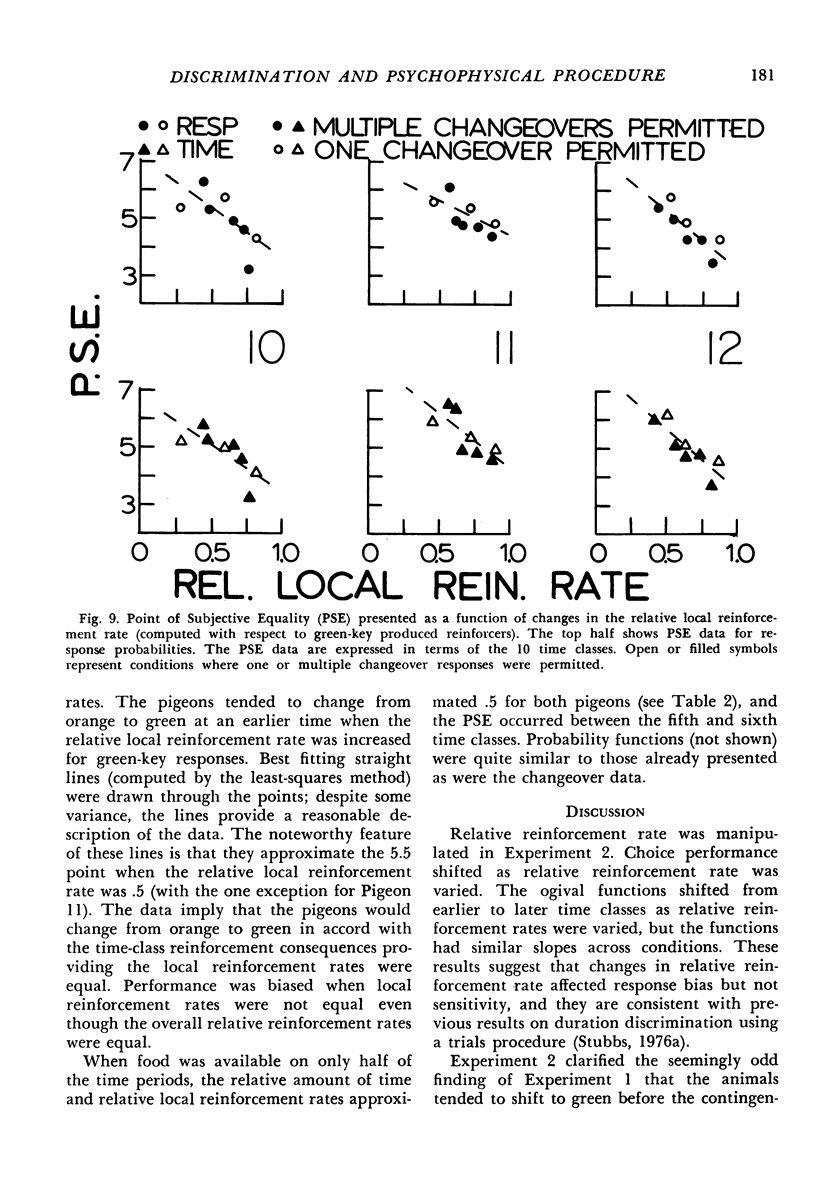

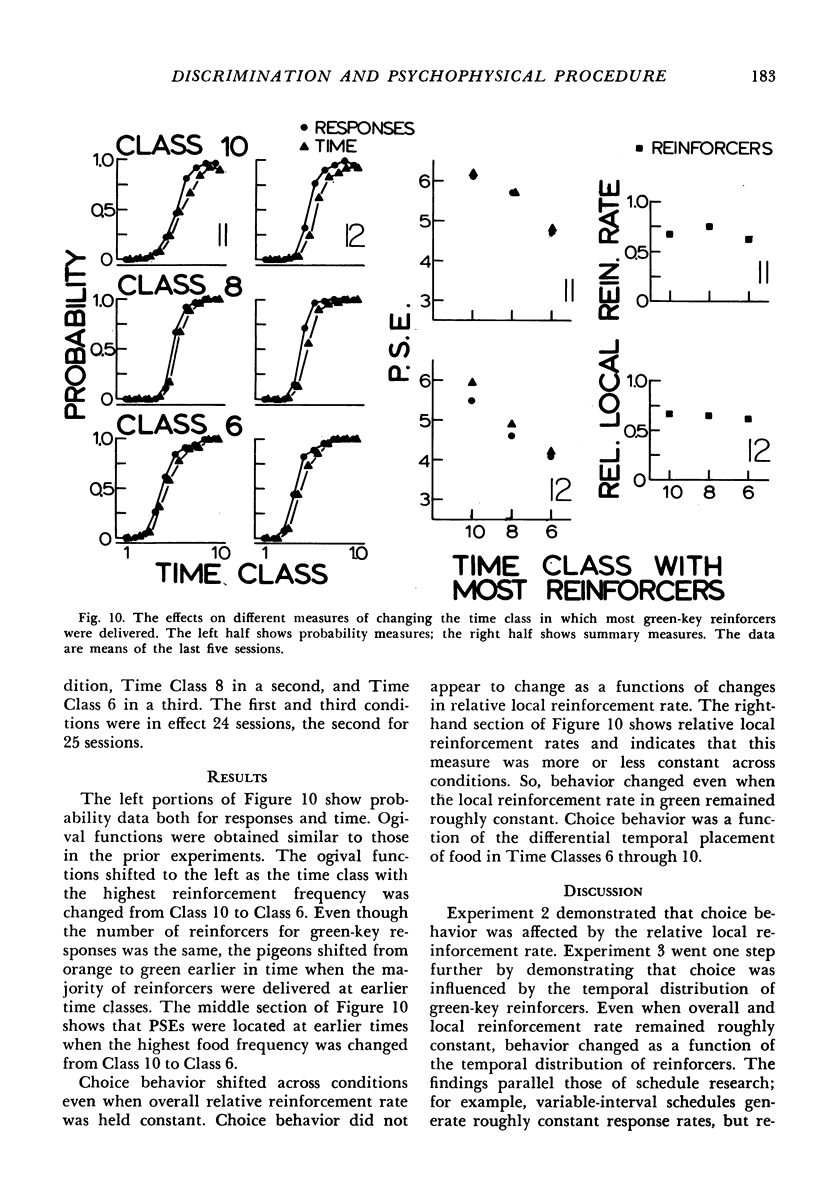
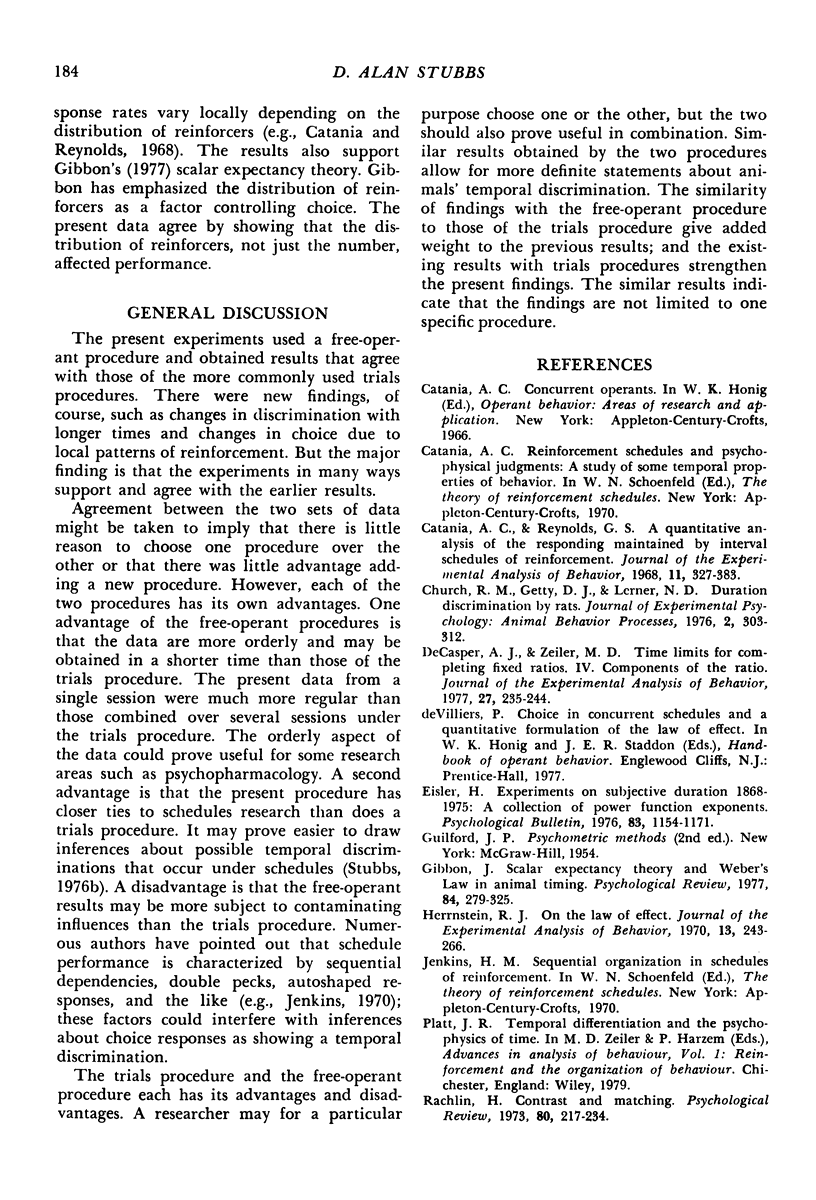
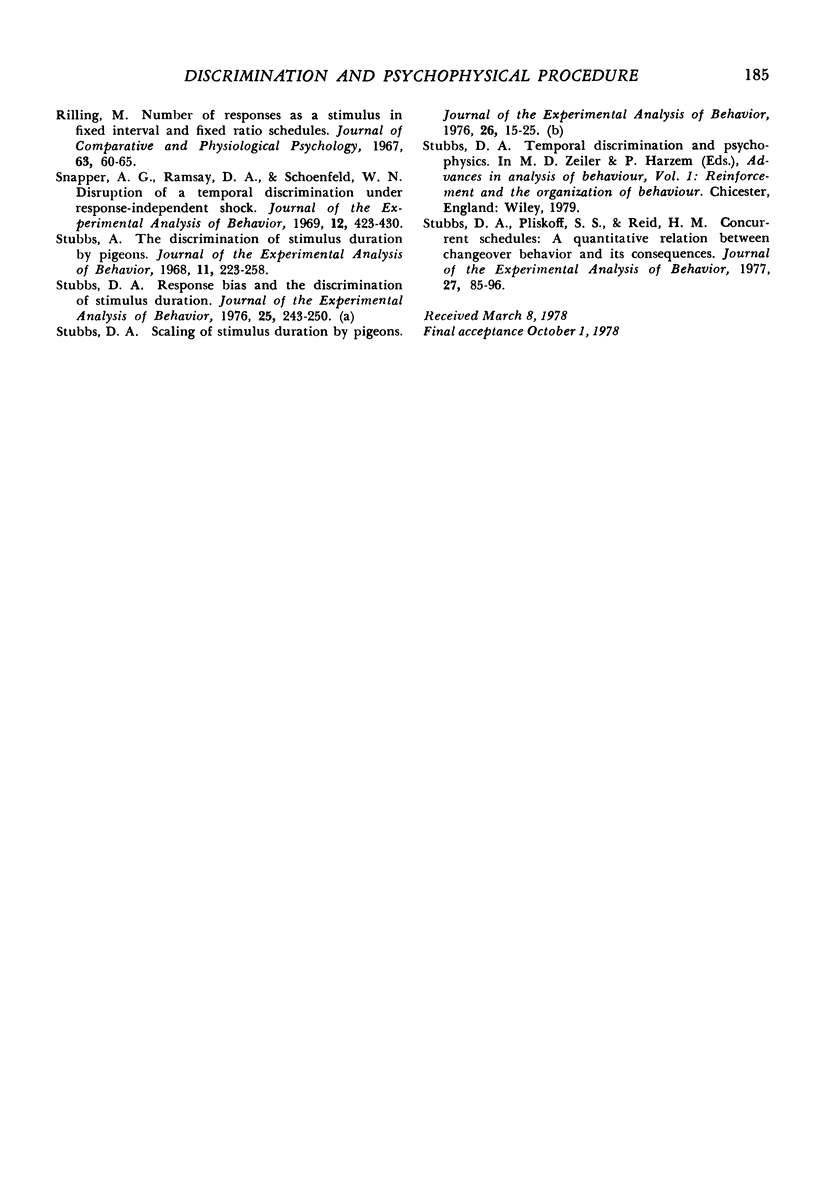
Selected References
These references are in PubMed. This may not be the complete list of references from this article.
- Catania A. C., Reynolds G. S. A quantitative analysis of the responding maintained by interval schedules of reinforcement. J Exp Anal Behav. 1968 May;11(3 Suppl):327–383. doi: 10.1901/jeab.1968.11-s327. [DOI] [PMC free article] [PubMed] [Google Scholar]
- Church R. M., Getty D. J., Lerner N. D. Duration discrimination by rats. J Exp Psychol Anim Behav Process. 1976 Oct;2(4):303–312. doi: 10.1037//0097-7403.2.4.303. [DOI] [PubMed] [Google Scholar]
- Decasper A. J., Zeiler M. D. Time limits for completing fixed ratios. IV. Components of the ratio. J Exp Anal Behav. 1977 Mar;27(2):235–244. doi: 10.1901/jeab.1977.27-235. [DOI] [PMC free article] [PubMed] [Google Scholar]
- Eisler H. Experiments on subjective duration 1968-1975: a collection of power function exponents. Psychol Bull. 1976 Nov;83(6):1154–1171. [PubMed] [Google Scholar]
- Herrnstein R. J. On the law of effect. J Exp Anal Behav. 1970 Mar;13(2):243–266. doi: 10.1901/jeab.1970.13-243. [DOI] [PMC free article] [PubMed] [Google Scholar]
- Rilling M. Number of responses as a stimulus in fixed interval and fixed ratio schedules. J Comp Physiol Psychol. 1967 Feb;63(1):60–65. doi: 10.1037/h0024164. [DOI] [PubMed] [Google Scholar]
- Snapper A. G., Ramsay D. A., Schoenfeld W. N. Disruption of a temporal discrimination under response-independent shock. J Exp Anal Behav. 1969 May;12(3):423–430. doi: 10.1901/jeab.1969.12-423. [DOI] [PMC free article] [PubMed] [Google Scholar]
- Stubbs A. The discrimination of stimulus duration by pigeons. J Exp Anal Behav. 1968 May;11(3):223–238. doi: 10.1901/jeab.1968.11-223. [DOI] [PMC free article] [PubMed] [Google Scholar]
- Stubbs D. A., Pliskoff S. S., Reid H. M. Concurrent schedules: a quantitative relation between changeover behavior and its consequences. J Exp Anal Behav. 1977 Jan;27(1):85–96. doi: 10.1901/jeab.1977.27-85. [DOI] [PMC free article] [PubMed] [Google Scholar]
- Stubbs D. A. Response bias and the discrimination of stimulus duration. J Exp Anal Behav. 1976 Mar;25(2):243–250. doi: 10.1901/jeab.1976.25-243. [DOI] [PMC free article] [PubMed] [Google Scholar]


